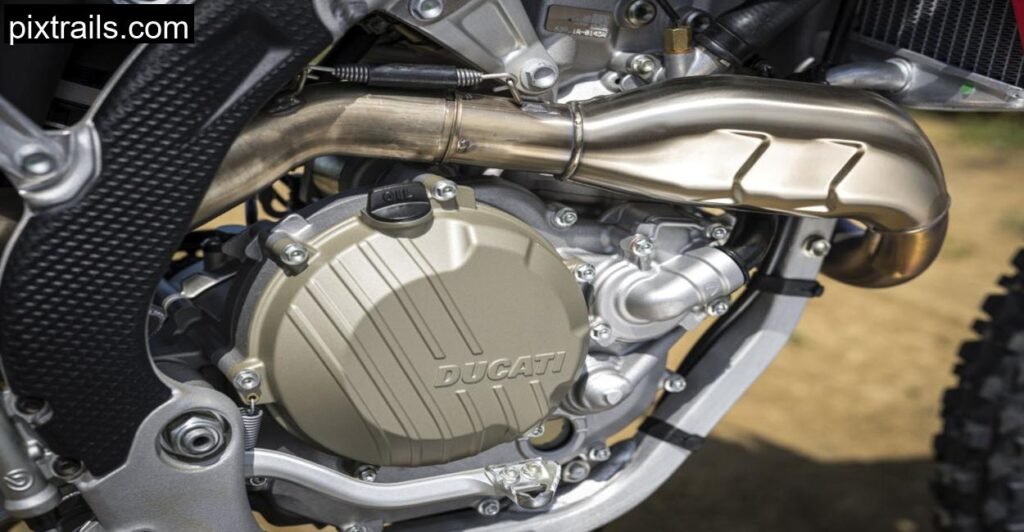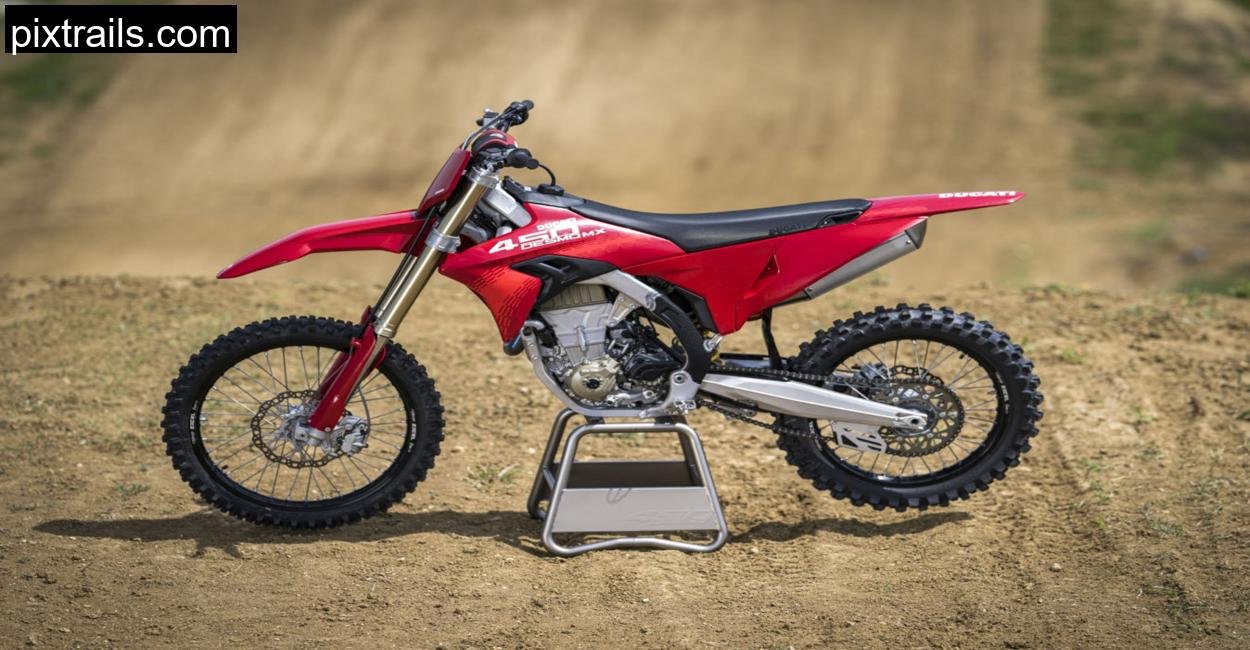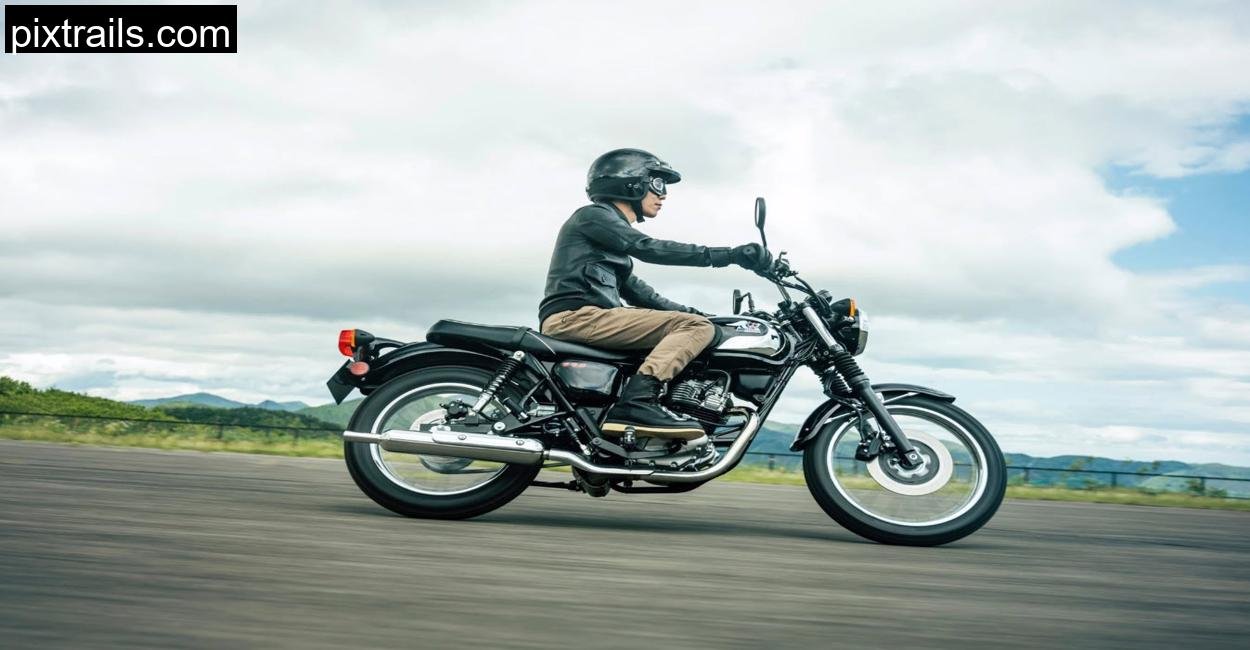The pastel-colored houses of Manarola clung to the cliffs like they had been painted there by an artist with a steady hand and a love for drama. The Mediterranean shimmered in the morning light, calm and glassy, a sharp contrast to the dirt and dust I was about to dive into just a few kilometers inland. Manarola might be postcard-perfect, but I was here for something far more raw, far more unpredictable, the Ducati Desmo 450 MX.
It was Ducati’s first-ever motocross bike, their leap into an entirely new discipline. And if there’s one thing about Italians, it’s that they don’t do “safe first steps.” This wasn’t a polite experiment. This was a statement. A 450cc single-cylinder Desmodromic engine, straight from the racetrack DNA of Borgo Panigale, thrown into the mud, sand, and air of motocross. I was about to find out if the passion translated.
The Setting – Ligurian Beauty Meets Motocross Brutality
The test track sat in the hills above the Ligurian coast, far removed from the clinking wine glasses and tourists down in Manarola. Up here, the soundscape was all thumps and roars, the chatter of knobby tires over hardpack dirt, and the occasional whoop of a rider nailing a jump.
I rolled the Ducati out of the transporter and immediately noticed the lines. Even standing still, it looked aggressive, with its frame hunkered down like a big cat ready to spring. The red livery wasn’t just “Ducati red”, it seemed deeper, almost glowing in the sun. This was no rebadged enduro; the Desmo 450 MX had been designed from scratch for motocross glory.
First Impressions – Light, Tight, and Very Italian

Throwing a leg over, the first thing I noticed was the balance. It felt narrow between the knees, with plenty of room to move forward and backward. Ducati’s engineers had clearly obsessed over symmetry, the Showa shock sat perfectly centered, and both the intake and exhaust were routed as straight as possible.
The clutch lever felt light in the hand, Brembo’s familiar precision immediately evident. I thumbed the starter and the Desmo engine barked to life. The idle was crisp, the exhaust note sharp but not obnoxious, well within MX noise regs at 109 dB, but still letting everyone within a hundred meters know something special had woken up.
Technical Specifications – The Numbers Behind the Roar
All information provided here is based on the Ducati’s official specifications. Any changes or updates can be found directly on their website.
| Specification | Ducati Desmo 450 MX 2025 |
| Engine | 450cc single-cylinder, 4-stroke, Desmodromic valve system |
| Bore x Stroke | 96 mm x 62.1 mm |
| Power | 63.5 hp |
| Torque | 53.5 Nm |
| Max RPM | 11,900 |
| Transmission | 5-speed |
| Frame | Aluminum perimeter, 11 components, 8.96 kg |
| Suspension (Front) | Showa 49 mm fork, Kashima coated, adjustable compression & rebound |
| Suspension (Rear) | Showa shock, adjustable high/low-speed compression & rebound |
| Brakes | Brembo calipers, Galfer discs (260 mm front, 240 mm rear) |
| Wheels/Tires | Takasago Excel rims / Pirelli Scorpion MX 32 Mid-Soft |
| Dry Weight | 104.8 kg (wet, no fuel) |
| Fuel Tank | 7.2 liters |
| Electronics | 2 standard riding modes, optional 4 via app, quickshifter, launch control, traction control (2 levels stock, 4 via app) |
| Service Intervals | Oil: 15 hrs, Piston: 45 hrs, Valve check: 45 hrs, Major service: 90 hrs |
| Price (Germany) | €12,490 + €345 fees |
The Ride – Power Delivery with a Personality
The first lap was cautious. The second… less so. By the third, I was starting to understand Ducati’s intentions. This wasn’t just a bike that could compete in the premier MXGP class, it was one that encouraged you to ride harder, jump further, and stay in the throttle just that bit longer.
The Desmo valve system allowed the engine to spin high without gasping or shuddering. In most 450s, pushing near the redline means fighting vibration and uneven delivery. Not here. The second gear was unusually tall, almost acting like a 2nd-and-a-half, letting me carry more speed without hunting for another shift.
On the tighter sections, traction control in its lowest setting was my friend. It didn’t cut the fun; it just smoothed out the wheelspin enough to keep the bike driving forward instead of sideways. In launch control mode, starts were surgical, dump the clutch, pin the throttle, and let the electronics filter the chaos.
Chassis and Handling – Confidence from the Ground Up
Ducati has always been about precision handling on asphalt, but translating that to dirt is another story entirely. The aluminum frame was incredibly stiff yet forgiving enough to avoid the “jackhammer” effect over braking bumps. Showa’s suspension setup was plush at slower paces but had the support needed for big landings, though on the high-speed Ligurian straights, it felt a touch soft for my weight and aggression level.
The balance between front and rear grip was excellent, which meant I could brake late without washing the front end, and still pivot on the throttle coming out. The Pirelli Scorpion MX 32s hooked up beautifully in the loamy sections, and the front tracked clean even when pushed deep into a rut.
Living With It – Service, Comfort, and Quirks

Motocross bikes aren’t about comfort, but I have to say the cockpit felt intuitive. Controls fell easily to hand, and the Domino-developed lock-on grips had just the right amount of bite without tearing my palms apart.
Service intervals are generous for a race bike, 15 hours for oil and filter, 45 for piston and valve checks. The seat, while slim and easy to slide on, had a slight recess near the front, meaning I had to nudge myself forward when really weighting the front wheel in corners.
The Verdict from Manarola’s Hills
By the time I peeled my goggles off and looked back at the Ducati, it didn’t feel like a “first attempt.” It felt like a bike that had been refined over several seasons of competition. The Desmo system wasn’t just a marketing gimmick, it tangibly changed the way the bike delivered power and handled high revs. The electronics were the most seamless I’ve used on an MX bike, adding performance without killing the raw feel.
It’s not cheap, in fact, it’s pricier than a standard KTM 450 SX-F, but Ducati has built something that justifies the cost in both engineering and experience.
Is the Ducati Desmo 450 MX beginner-friendly?
Not really. While it’s manageable in the gentler riding mode, this is still a full-fat 450cc motocross bike aimed at experienced riders.
Can you trail ride with Ducati Desmo 450 MX?
Possible, but it’s built for motocross tracks. The gearing, suspension, and seat comfort are all track-focused.
How does Ducati Desmo 450 MX compare to KTM or Honda’s 450s?
The Ducati stands out in engine feel thanks to the Desmo system, and its electronics are ahead of most competitors. Suspension is competitive but slightly softer out of the crate.











